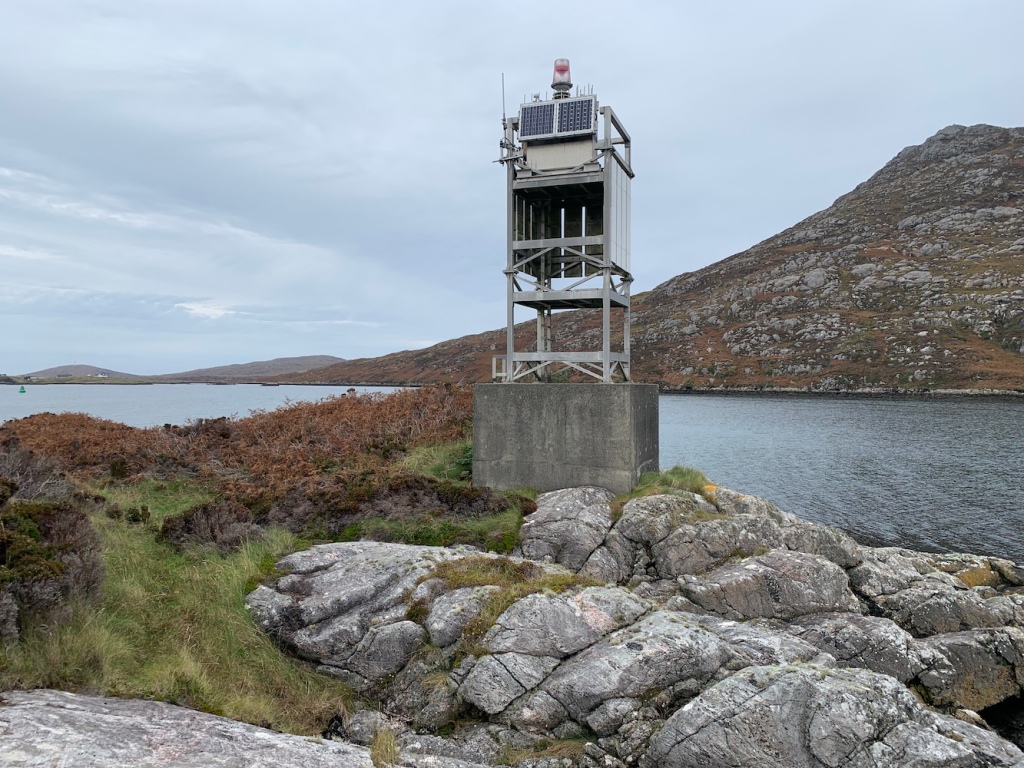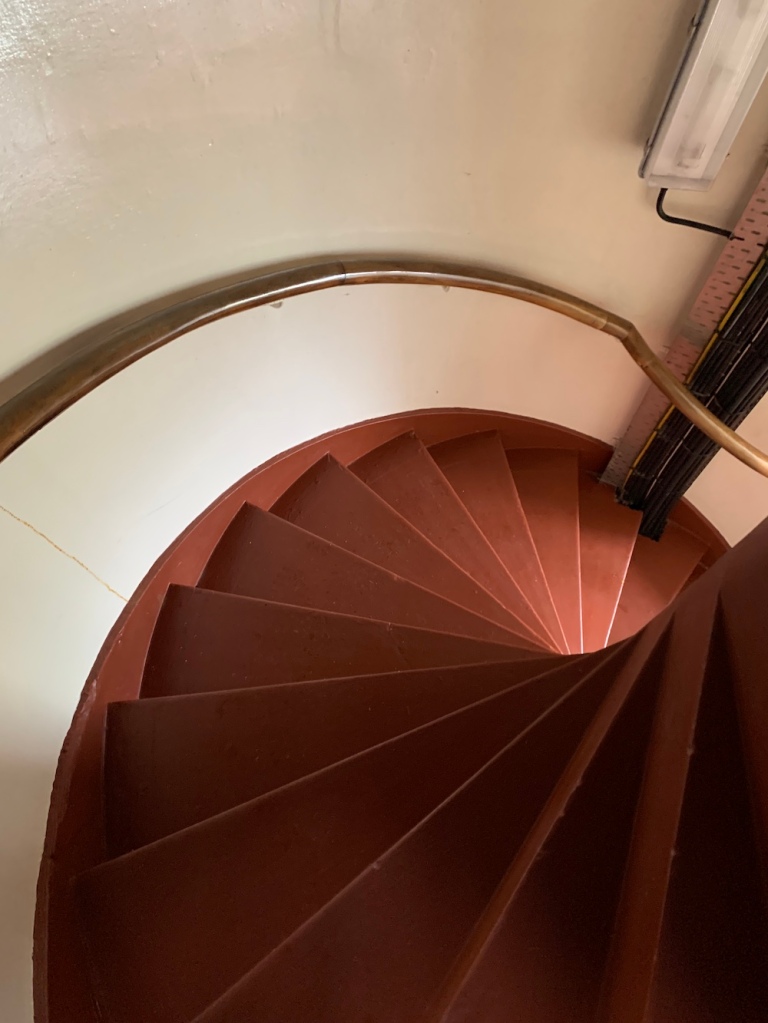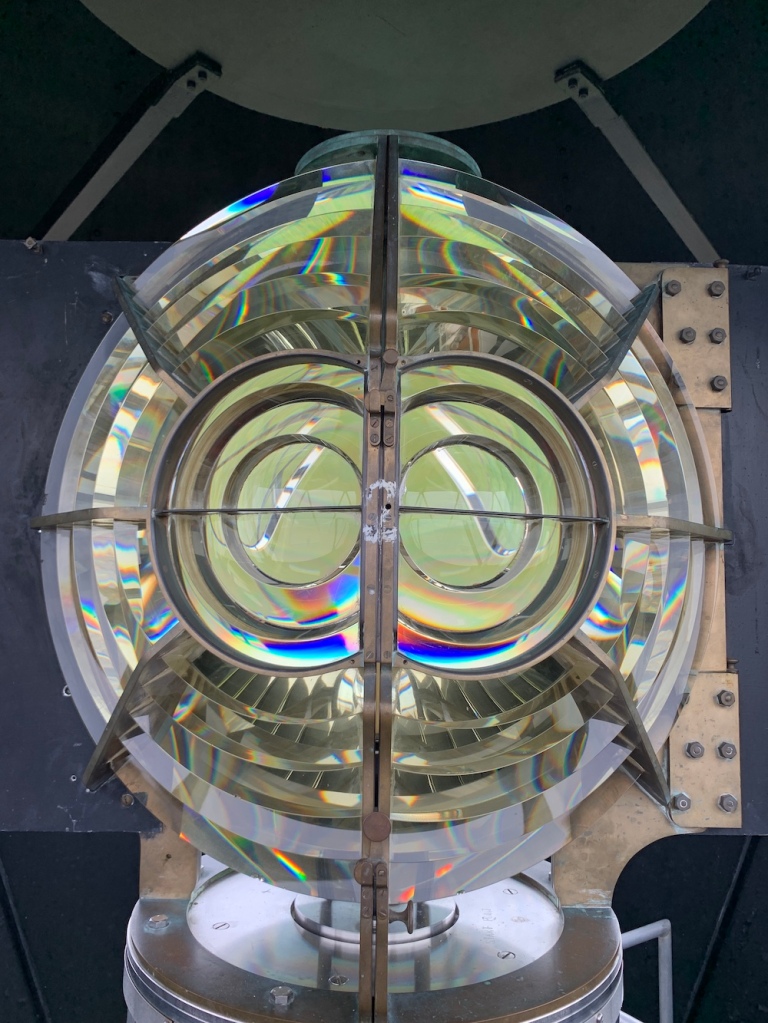In recent years while I’ve been visiting lighthouse of all shapes and sizes, particularly those smaller lights in Scotland, I’ve seen a number of very negative comments about these modern lighthouses. What I am referring to here are the Northern Lighthouse Board’s SPLATs (solar powered lattice aluminium towers). That acronym describes it rather perfectly actually, although regular readers of my blog will be aware that I personally refer to them as flat-pack lighthouses.
These towers are limited to only the north and west of Scotland, which gives a good indication of their often remote locations, on islands or tucked away on headlands. There are 53 of these structures in Scotland: 18 in Shetland, 2 in Orkney, 1 on the North Coast, 7 in the Outer Hebrides, 11 in the Inner Hebrides and West Highlands, 13 between Mull and Islay, and 1 in South West Scotland.
To start with, some history. My recent research suggests that, although it was around 1996 that these structures began to replace the older, small lighthouses, the two towers of this type on Gasay and Calvay – found on the approach to Lochboisdale in South Uist – were actually installed in 1985. These two framework towers aren’t as enclosed by the white cladding as many of the newer versions are, but they are still very much the same arrangement.
I’ve been fascinated to find that the history of these towers actually goes back a lot further than I’d originally thought. Along with being left off most lighthouse lists, and left out of near enough all books on Scottish lighthouses, they are so rarely mentioned anywhere which is a shame as it appears they played a key role in shaping the future direction of small Northern Lighthouse Board structures for many years to come when those first two were installed.
For a good few years now I’ve had a growing appreciation of these structures. To begin my defence of them, I want to highlight the purpose of a lighthouse. Lighthouses, unless purely decorative, were never built for us land-based folk to gaze at adoringly. That is certainly the case for many of us now who travel to admire the big, old lighthouses. However, their primary purpose was to exhibit a light that could be seen at night and would help to guide ships. At night you can’t see the structure, all you know is that it’s a light helping to guide you or assisting you with working out exactly where you are. If it achieves that, regardless of what the structure looks like, then it is fulfilling its core purpose.
In an ideal world money would be no object, but of course cost plays a role when deciding what type of structure will be installed. As much as I love a large, dramatic lighthouse I recognise that, for any lighthouse authority, paying out hundreds of thousands (or more likely millions) of pounds to build a new one is not a wise financial decision.
Financial restrictions force a company to look at what is required for the new or replacement structure in this case. The big lighthouses we all know and love were built to be lived in and to contain a considerable amount of machinery and equipment too. If you’ve ever been in a lighthouse that contains the old equipment you will see that even then a lot was squeezed into a small space.

If you have ever visited one of the flat-pack type lighthouses you will see just how little equipment is in them, usually just one or two cabinets on the ground or first floor and then the external light and another small cabinet on top. There is no need for bedrooms, a kitchen, a bathroom etc. so it’s understandable that the decision wouldn’t be made to build a lighthouse that has the space to accommodate those.
I’ve often seen mentions of ‘The Stevensons would be turning in their graves if they saw these’ and I’m not so sure they would. The Stevensons were engineers. Yes, engineers probably like to design the most awe-inspiring buildings which would give them a big personal boost, but practicality is key for them and if they were having to work within today’s budgets I’m sure they would opt for this type too. The final generation of Stevenson lighthouse engineers designed a range of smaller wholly practical lighthouses, such as the former Sandaig Islands Lighthouse (pictured below). These lighthouses are not grand, although I am still very keen on them myself. They were a sign of the times and reflected the changes in what was needed for new and unmanned lighthouses as well as availability of more cost-effective materials.

On a final and personal point, I’ve visited a considerable number of these flat-pack towers over the past 9 years and I’ve had some of the best days out with them as my objective. I’d like to share a few examples. The light on Loch Eriboll, my first flat-pack, is one of those I’m most fond of. It’s a relatively short walk compared to many of the others, as long as you know where to start and the right direction to head in. The coastline of Loch Eriboll is top class and my first walk to the lighthouse really kicked off my ever-growing appreciation of that loch.
These lighthouses aren’t often easy to get to. You can’t drive to them as you can with some of the larger towers and they certainly don’t have obvious tracks or paths leading to many of them as all of the older lights do. Getting to the flat-pack now located on Cailleach Head near Scoraig was a massive personal achievement. I wasn’t sure I’d ever make it as I knew it involved a long walk in from the nearest road or making arrangements with a local boatman. This was also the case with Hoo Stack in Shetland, which was great fun to visit alongside some island bagging pals. The shared enjoyment with friends could very much also be said of Glas Eileanan (Grey Rocks Lighthouse) in the Sound of Mull, the Sandaig Islands light and Bunessan Lighthouse on the west coast of Mull.
It’s not just friends though, my son visited his first flat-pack lighthouse when we walked to Point of Sleat. It was a great walk, but was super windy and I remember well us setting up a little pop-up shelter not far from the lighthouse to hide away in at lunchtime with the little man. My daughter only recently bagged her first flat-pack lighthouse, the newest one, Rubha Cuil-Cheanna near Onich. That was a great walk made slightly more challenging by having the kids to keep safe, but still good fun.
There have been some fairly unique experiences involved in reaching them too. Wading through a channel of water to get to the flat-pack on Hestan Island was great fun. Visiting Papa Stronsay was also an interesting experience with the island being home to the Golgotha Monastery and having a long history of occupation by religious groups.
There have been so many great times getting out to these small but really important little structures. I suppose if there was one final thought I would like to end on it’s that, with the recent addition of the Rubha Cuil-Cheanna light, I’m just glad they are still adding new lighthouses, even if it is only one every 11 or so years 🙂












































